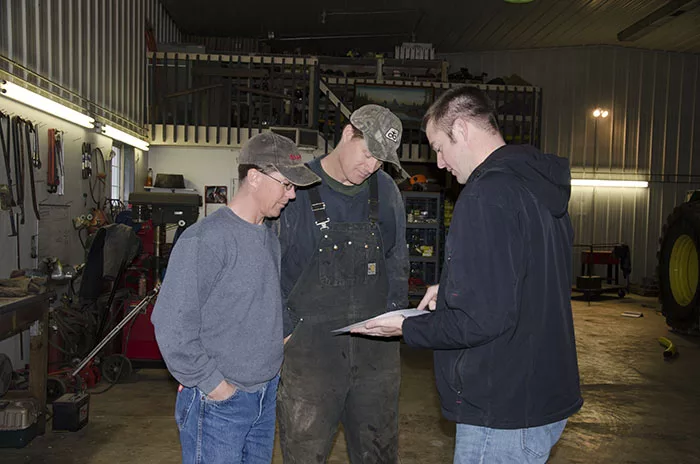Many dealerships’ precision departments felt a sales pinch in 2015. Although most precision specialists aren’t expecting a big market uptick anytime soon, they’re making plans to be leaner and more effective in 2016 despite continuing market pressures.
Phil Moskal, integrated solutions manager at Mid-State Equipment, a 7-store dealer, in Janesville, Wis., says that precision equipment sales were down an estimated 25% this year, but by targeting smaller farmers and emphasizing technologies that have high return on investment, he thinks they can make up for lost ground.
“Our biggest growth opportunity is with products that lower farmers’ costs,” says Moskal. “Specifically variable-rate, boom section control and row clutches for farmers who haven’t made those investments yet. We have to customize offerings to fit farmers’ needs — whether they’re dairy farmers or small row croppers.
“My average customer still farms probably 500-600 acres. Justifying a large expenditure on precision ag equipment is hard for them, but if we can really prove that it returns value, it’ll be easier.”
Moskal also sees branching into data management services as both a market imperative and a reliable future revenue stream for precision departments.
“The data management and data analysis side is going to be the future foundation of precision ag,” says Moskal. “We’ve been selling equipment that pulls in an enormous amounts of data, but we need to make sure that it’s having the biggest impact for customers that it can. Showing farmers how to make money or save money with their data will be huge going forward.”
Jed Bengtson, vice president of sales and marketing at Torgerson's, an 8-location Case IH dealership network in Montana, is similarly drawn to agronomics and data management as a source of revenue. Torgerson’s formed a strategic partnership with Agri-Trend 2 years ago to bring agronomy coaching, teaching and data analysis to their customer base. Although the new endeavor is based on a business model that the dealership has less experience with, they’ve already seen some early success.
“We have about 25 of our customers making use of Agri-Trend services in some way,” says Bengtson. “Every one of the customers has come back and renewed for the following year as well. We should look for the investment it took to bring the service into our dealership to pay for itself in about 4 years, but with the way things are going, we’re on target for it to be profitable in 3 years.”
Bengtson also notes that the continued market slowdown is no reason to let up on implementing new products, services and technologies.
“In 2016, the barriers to growth will continue to be farmers’ spendable income,” says Bengtson. “However, on the purchases that still do happen, farmers are pursuing efficiency focused precision products. Even though the market is off 10-15%, we’re still getting all the available technology and customers are responding. If we didn’t have those offerings, the industry would be off even more.”
While innovations will likely lead dealerships though a difficult 2016, so will a return to basics. Luke Bennett, AMS manager of Oregon Trail Equipment, an 8-store John Deere dealership network in Beatrice, Neb., plans on spending more time this year selling one-on-one with customers and demonstrating precision products that have a high rate of return.
“The easiest products to sell still are AutoTrac and section and swath control activations,” says Bennett. “Depending on the product, we’ve let farmers run equipment for an entire season, just to try it. Going into 2016, I see the expense of demoing more being well worth it.”







